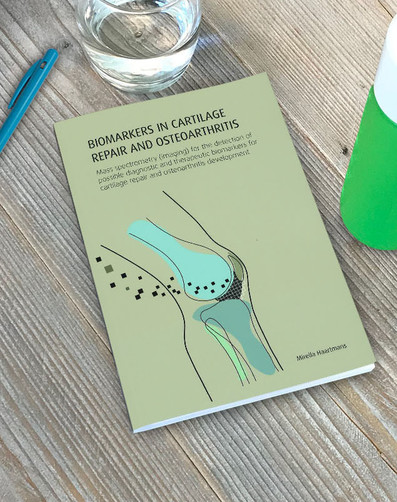
Osteoarthritis not only affects the elderly population, but also more and more the younger population. It not only causes disability, but also increases the risk of existing conditions such as heart disease. The incidence is expected to increase due to an aging population, as well as an increase in obesity and sports injuries such as a cartilage defect. Osteoarthritis is characterized by cartilage breakdown, negatively affects quality of life, and is usually diagnosed at a late stage. At present, there are no specific factors for early detection of osteoarthritis or its development after cartilage repair surgery. Various tissues in the knee, including the infrapatellar fat pad, contribute to healthy homeostasis. This fat pad is an important inflammatory mediator in the knee joint and is associated with knee pain, as well as worsening of knee osteoarthritis. This thesis, therefore, searched for factors that can be measured in the fat pad in the knee using mass spectrometry, a technique with which molecules in a patient's tissue can be analyzed. Using these factors, possible new and/or personalized treatment strategies can be developed for cartilage repair and early osteoarthritis.
Download Thesis